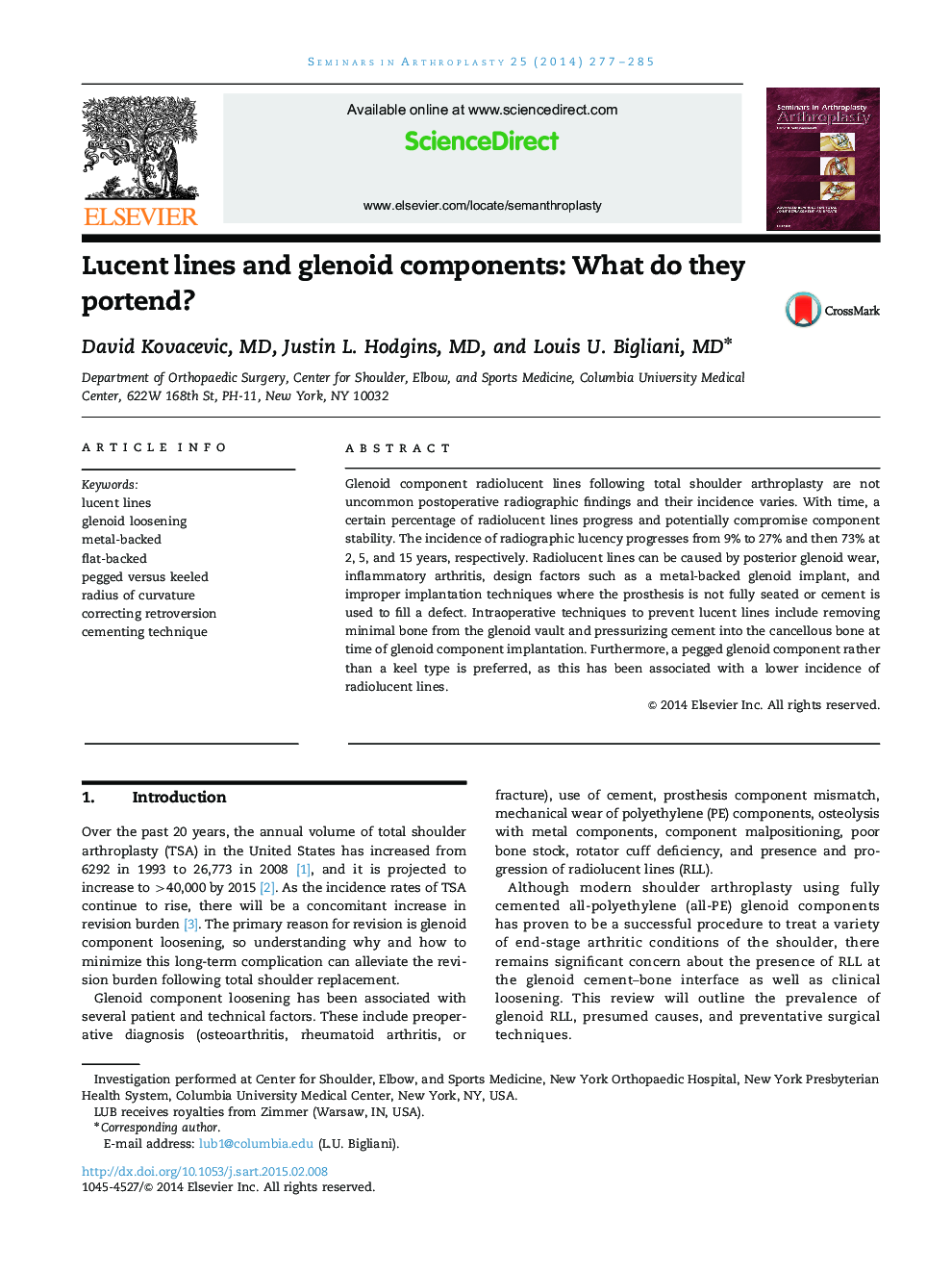| Article ID | Journal | Published Year | Pages | File Type |
|---|---|---|---|---|
| 4093887 | Seminars in Arthroplasty | 2014 | 9 Pages |
Glenoid component radiolucent lines following total shoulder arthroplasty are not uncommon postoperative radiographic findings and their incidence varies. With time, a certain percentage of radiolucent lines progress and potentially compromise component stability. The incidence of radiographic lucency progresses from 9% to 27% and then 73% at 2, 5, and 15 years, respectively. Radiolucent lines can be caused by posterior glenoid wear, inflammatory arthritis, design factors such as a metal-backed glenoid implant, and improper implantation techniques where the prosthesis is not fully seated or cement is used to fill a defect. Intraoperative techniques to prevent lucent lines include removing minimal bone from the glenoid vault and pressurizing cement into the cancellous bone at time of glenoid component implantation. Furthermore, a pegged glenoid component rather than a keel type is preferred, as this has been associated with a lower incidence of radiolucent lines.
